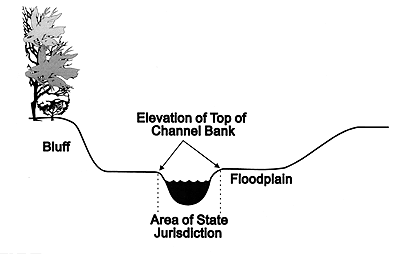 |
 |
Regulating Construction and Other Alterations to River Channels and Related Wetlands
Both the Corps and the DNR regulate construction and other activities that modify river channels and related wetlands. The Corps regulates activities affecting the navigation capacity of designated navigable water waterways in the U.S. under Section 10 of the Rivers and Harbors Act. Permitted activities must not cause substantial adverse effects on navigation or the environment. Designated navigable waterways in Minnesota include: Big Fork River, Bois De Sioux River, Kawishiwi River, Kettle River, Little Fork River, Minnesota River, Mississippi River and Headwaters Reservoirs, Pigeon River, Pike River, Rainy River, Red River of the North, Red Lake River, Rum River, Snake River, St. Croix River, St. Louis River, Vermillion River, and the streams of the International Boundary Waters. The Corps also regulates activities related to placing dredged materials or other types of fill into any U.S. body of water or wetlands area, under Section 404 of the Clean Water Act. By this authority, the Corps holds jurisdiction over virtually every water body and wetland in Minnesota.
The DNR regulates activities pertaining to physical changes in the channel, current, or cross-section of protected waters including docks, boat ramps, shore protection, beach development, and drainage construction. Jurisdiction with regard to physical changes in protected watercourses is limited to the elevation at the top of the channel bank (Figure 4.3). The DNR also regulates protected riverine wetlands along with protected lakes, reservoirs, and other types of wetlands. Under the current regulatory guidelines, the DNR requires a permit for some activities. However, activities that do not require a permit generally must conform to established standards.

Figure 4.3 Area of State Jurisdiction Regarding Physical Alterations to Streams